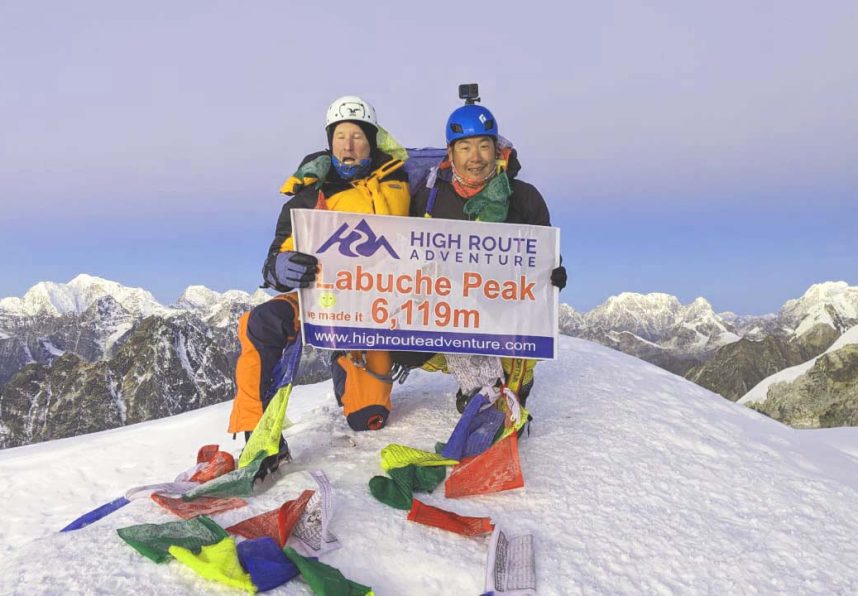Home to the majestic Mt. Everest (8848 m), Nepal is a part of the Great Himalayan Range in Southern Asia. Along this sublime chain of mountains, there are several other Himalayas like the Kanchenjunga (8586 m), Manaslu (8163 m), Annapurna (8091m), Lhotse (8516m), and Makalu (8485m). While these snowy giants are remarkable destinations for strenuous expeditions, there are plenty of easier peak climbing destinations as well. Peak Climbing in Nepal is classified as the scaling of mountains below the height of 6,500 meters. All in all, 414 peaks in Nepal have been opened for peak climbing.
Adventure seekers enjoy the peak climbing trails in Nepal not only for the magnificent peaks but also to experience the rare Himalayan culture. With a generous mix of Tibetan and Sherpa cultures, climbers can also relish their warm hospitality. The mountains are not the sole attractions for climbers, an array of glacier passes, gorges, lakes, and a diverse range of flora and fauna make for a better traveling experience while ascending the peaks of Nepal.
Varying according to difficulty or destination, there are plenty of choices when choosing peak climbing options in Nepal. Likewise, the adventure sport requires climbing skills and a certain level of physical fitness because of strenuous climbing activities. The major targets for peak climbing in Nepal are young adults or people who have at least some climbing experience with a fit physique.
The Annapurna, Everest, and Langtang regions are the most popular destinations in Nepal for peak climbing. However, there are numerous other peaks across the country which offer similar adventure and thrill. Some of the most famous peak climbing sites in the Everest region are Island Peak (6189 m), Lobuche East Peak (6119 m), Mera Peak (6461 m), and Nirekha Peak (6159m). Yala Peak (5500m), Naya Khang (5844m), and Baden Powell Scout Peak (5890m) are notable destinations in the Langtang region. In the Annapurna region, Chulu East Peak (6429m), Dhampus Peak (6012m), Mardi Himal (5553m), and Pisang Peak (6091m) are the popular peak climbing options.
People who are trying to indulge themselves in this adventure sports should be aware of the dangers of the climbing regions beforehand, taking notes on the weather of the regions before starting their climb. As most of the peaks are higher than 6000m, the weather is most of the time unpredictable and cold, so precautions should be taken before the accent.
The best time to do the peak climbing trips in Nepal is during autumn (September to November) and spring (March to May). These seasons are warm and dry, making for better weather conditions with stable weather conditions. However, it can't be said for sure that unpredictable weather won’t be faced even in these seasons so, awareness beforehand is necessary for safe travel.




